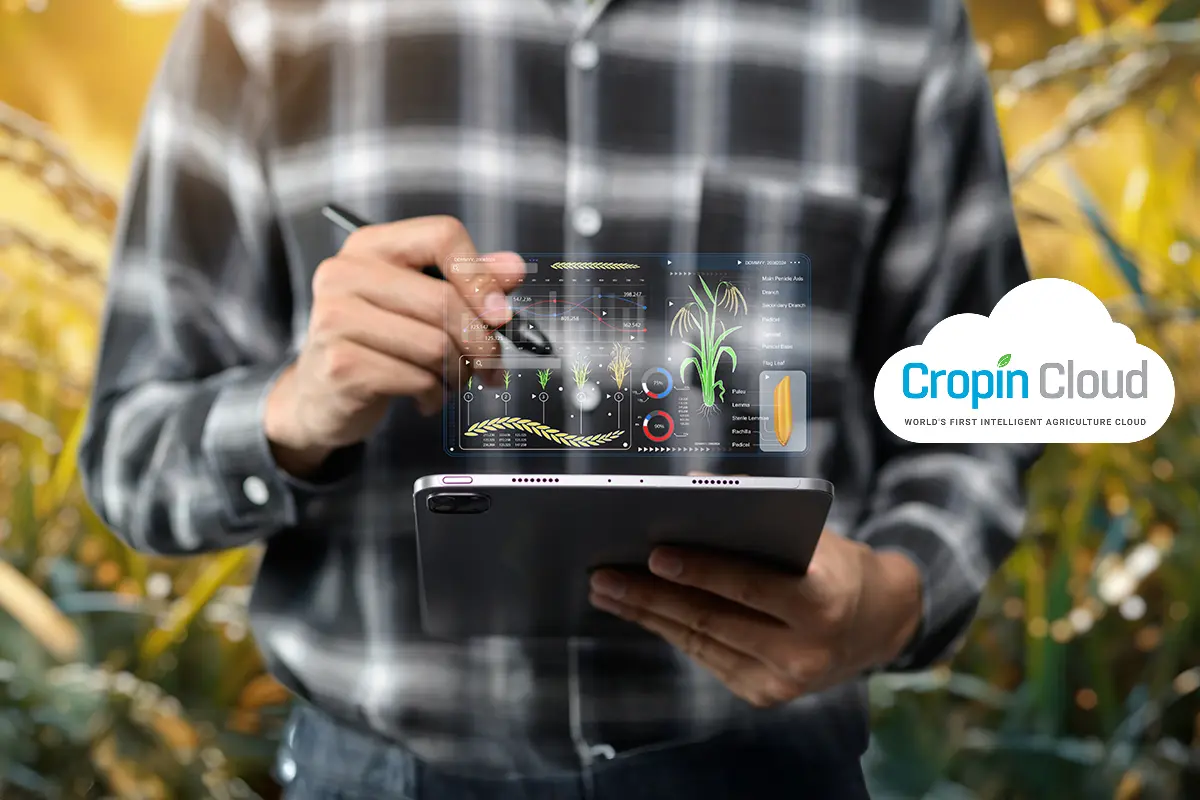Predicting crop yields in agriculture is a formidable challenge, determined by complexities of soil health, weather conditions, pest and disease, and management practices. While traditional methods of crop yield predictability were once deemed sufficient, today’s landscape is far more complex, where seasonal shifts alone no longer account for variations in accuracy.
Climate change has thrown a curveball to the equation, introducing a dizzying array of variables that challenge even the most seasoned experts. From unpredictable weather patterns and extreme events to altered growing seasons and evolving pest pressures, the delicate balance between sowing and reaping feels increasingly precarious.
The accuracy of yield prediction (be it an increase or decrease) has a huge impact on businesses.
Let’s consider this example. A 1% improvement in yield prediction accuracy, from 90% to 91%, can tip the scales dramatically. how?
- For seed businesses – it translates to Additional revenue, Optimized inventory and Stronger customer loyalty.
- For food producing companies – it translates to Enhanced harvest planning, Optimized resource utilization, Reduced risk of losses and Improved market access.
- For commodity traders – it translates to Stabilized market fluctuations, Informed trading decisions and Enhanced global food security.
What is crop yield prediction?
Crop yield prediction is the process of accurately predicting the potential yield of a specific crop, during a particular season in a given region. Accurate yield predictability requires scientific expertise, local knowledge about the region, and crops grown there. It is estimated using diverse data sets like weather patterns, genetics of the seed, soil properties, farm management and statistical datasets among others. A field tested multi-tier algorithm is applied to compute the yield estimates.
What are the benefits of yield prediction?
The traditional approach to crop yield prediction
While yield prediction holds immense value in bringing the right balance between sustainability & profits for the agricultural sector, its inherent uncertainties due to numerous influencing factors often lead to inaccuracies. Accuracy in yield predictability, regardless of method, depends on the accuracy of observations taken in the field. Data is the core of yield prediction models. The more precise and comprehensive the data, the more robust and trustworthy the predictions.
Traditional yield sampling methods uses a manual random sampling approach. This method relies on historical yield and visual assessments which are then extrapolated to get yield estimates.
It does not account for the heterogeneity of the field, which results in inaccurate sample collection and skewed predictions. Fortunately, the advent of technology, including satellite monitoring, remote sensing, and machine learning tools, is ushering in a new era of more robust and effective prediction models.
Using technology for accurate yield estimation
Satellite monitoring of vegetation indices
Satellites, strategically positioned in orbit, play a pivotal role in assessing both spatial and temporal variations in precision farming practices. Within agriculture, satellite monitoring employs vegetation indices to continually evaluate each farm, analyzing biophysical features in crops. For instance, NDVI interprets crop greenness, indicating plant health, while NDRE determines nitrogen uptake, and LSWI provides insights into water stress. All these play a vital role in determining crop yield.
Remote sensing for growth variables
Remote sensing, the science of acquiring information without direct physical contact, serves as a powerful tool in agriculture. This data collection tool estimates soil moisture, light received by plants, and more. Remote sensors offer valuable insights into growing crops and their environmental conditions, contributing to accurate crop yield predictions well before the harvest.
Machine learning for improved predictability
Scientists and engineers develop unique machine-learning models to predict yield ranges from farms. Cropin’s Hybrid and advanced yield estimation model integrates data from fields, satellite imagery, remote sensors, and weather data to estimate yield at major crop stages during the cycle. These models are hyper-tuned for different regions, crops, and varieties. Cropin utilizes a hybrid approach encompassing evapotranspiration, crop knowledge graphs, datasets from farming practices, weather, and crop science.
Our approach to crop yield prediction
The Smart Sampling feature offered by Cropin, leverages the above technologies to elevate sample collection to a scientific level surpassing the limitations of traditional approaches.
Smart sampling, a module in Cropin Grow, utilizes advanced indices derived from satellite data to accurately pinpoint and examine diverse areas within a farm, ensuring a truly representative analysis of its heterogeneity. This targeted approach ensures that the data fed into prediction models is of high quality, significantly improving the accuracy and efficacy of yield forecasts.
The feature also allows agronomists to tailor the number of sampling zones to thoroughly analyze and map the inherent farm variability. They can define heterogeneity levels, choose specific zones, set sampling points and then dispatch teams to collect data. The attention to details ensures sample accuracy, capturing the true detail from flourishing to stressed areas, which is crucial to enhance yield predictability.
Traditional sampling vs. smart sampling for accurate yield prediction
| Traditional Sampling for yield estimation | Smart Sampling for yield estimation |
|---|---|
| Manual random sampling, where a small representative portion of the field is assessed and extrapolated for the whole. This method is often inaccurate due to inherent heterogeneity in the field. | By leveraging satellite imagery, and machine learning algorithms, smart sampling can capture the heterogeneous nature of the entire field, providing a scientific approach to sample collection. |
| Yield History data offers a baseline for estimations, but variations in weather, soil conditions, and pest pressure can render this method unreliable. | Smart sampling, powered by advanced technologies like remote sensing and AI that capture variations, is transforming yield predictability. |
| Experienced farmers do a Visual Assessment and gauge yield based on factors like plant height, leaf color, and overall crop health. This subjective approach is prone to human error | Smart sampling refines sample collection with precision and detail. Agronomists can comprehensively understand the farm by increasing the number of sampling layers or zones. |
Applications of crop yield prediction across agriculture seasons
Comprehensive yield predictability solutions can transform cultivation from seed to harvest unlocking a range of optimization practices at every stage.
Pre-season insights: Unearthing Potential Before Planting Begins Explore your soil and historical crop data before the first seed touches the ground, setting the stage for informed decision-making.
In-season management: Nurturing Crops from Sowing to Harvest. Gain comprehensive insights throughout the crop’s lifecycle, including yield estimation, crop stage monitoring, and real-time weather conditions, ensuring proactive and efficient farm management.
Post-season analysis: Harvesting Knowledge for Future Growth. Analyze harvested data to refine future yield predictions and strategically plan for the upcoming season, optimizing agricultural practices based on valuable post-harvest insights.
Need for yield re-estimation
Crop yield re-estimation involves adjusting the initial crop yield estimate based on additional data, ensuring a more accurate prediction of the harvest. Reasons for re-estimation include early-season estimates, where unforeseen events impact actual yield. The incorporation of new data inputs collected during the season helps account for these changes and improve the accuracy of yield predictability.
Cropin employs ground-based sampling and remote sensing data, utilizing advanced algorithms trained on historical and current observations to enhance the accuracy of yield re-estimation.
In conclusion, the integration of a comprehensive yield intelligence bundle, powered by Cropin’s extensive field-tested crop knowledge graph as the foundation of intelligence, combines plot-level insights with smart sampling, to ensure high accuracy of yield estimation, even amidst climate challenges. This harmonization of traditional human-centric methods with cutting-edge AI/ML algorithms delivers reliable and consistent yield prediction, empowering informed decision making for a resilient agricultural future.
As we embrace these technological advancements, we unlock a world of possibilities, one where every field is traceable and every harvest is powered by knowledge and innovation. The future of Yield Predictability is no longer shrouded in uncertainty, we can now approach harvest with newfound confidence.
Cropin Intelligence offers detailed plot-level insights for optimization of farm management, yield and profitability. This comprehensive yield intelligence bundle boasts an array of powerful tools namely:
- Smart sampling: Overlays remote sensing metrics on each registered farm, pinpointing variability and ensuring accurate analysis.
- Hyper-tuned yield estimation models: Precisely predict yields for specific regions, crops, and varieties based on local factors.
- Disease early warning system (DEWS): Proactively monitors crop stages and weather forecasts, issuing alerts before disease strikes, enabling preventative action.
- Crop health monitoring: Continuously monitors individual farms with tailored diagnostics, mitigating losses and boosting yields.
- Crop growth monitoring: Tracks daily crop development, accounting for farm-specific weather variations for informed management.
- Weather monitoring: Provides real-time weather data and integrates the Climate Smart engine within Cropin Grow for informed decision-making.
Get a demo of our Smart Sampling feature today!
Frequently asked questions (FAQs) on crop yield predictability
What is the aim of crop yield prediction?
What are some of the yield estimation methods or approaches?








